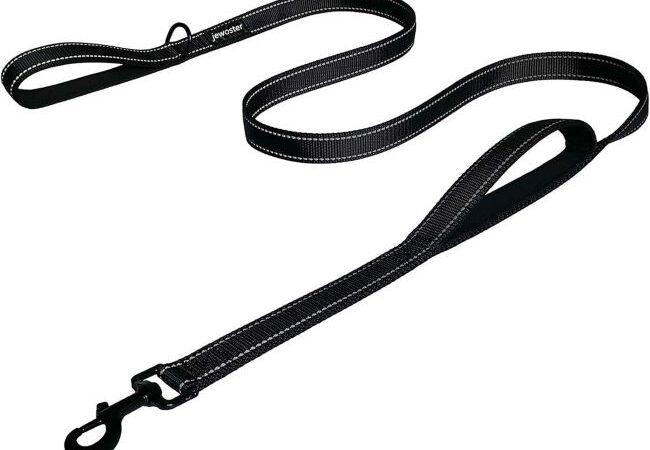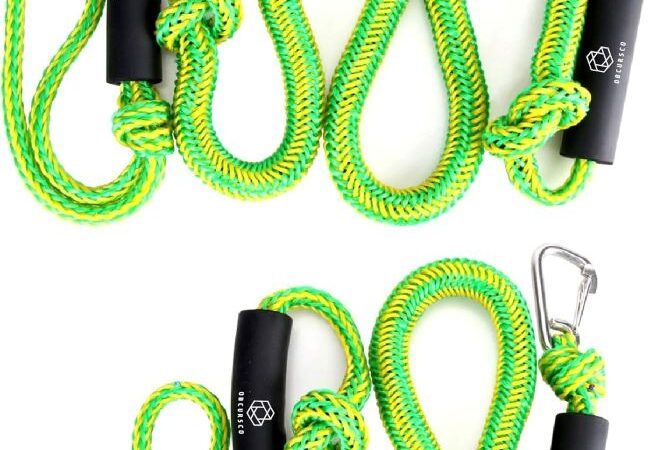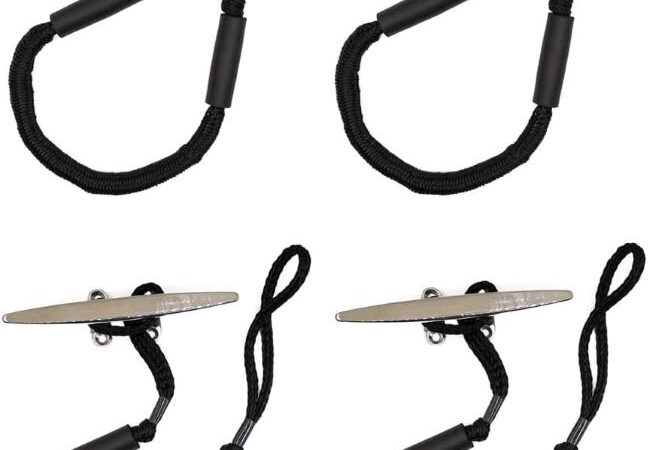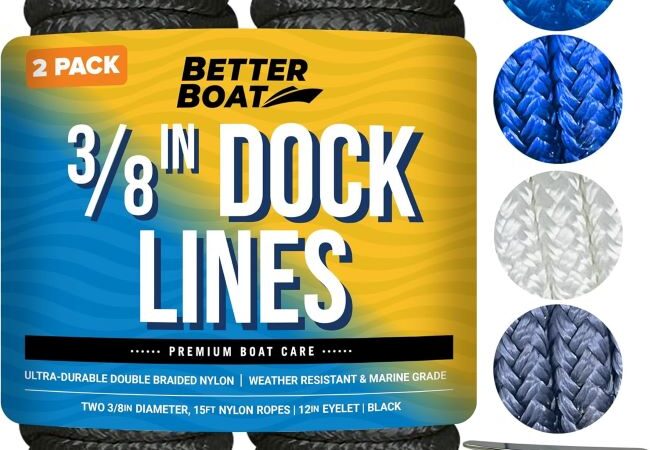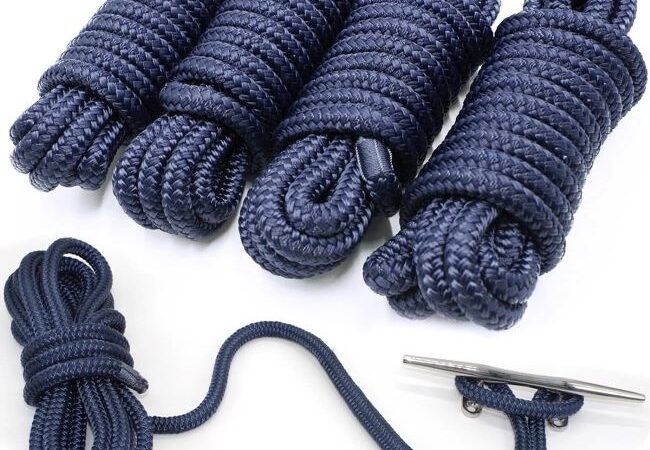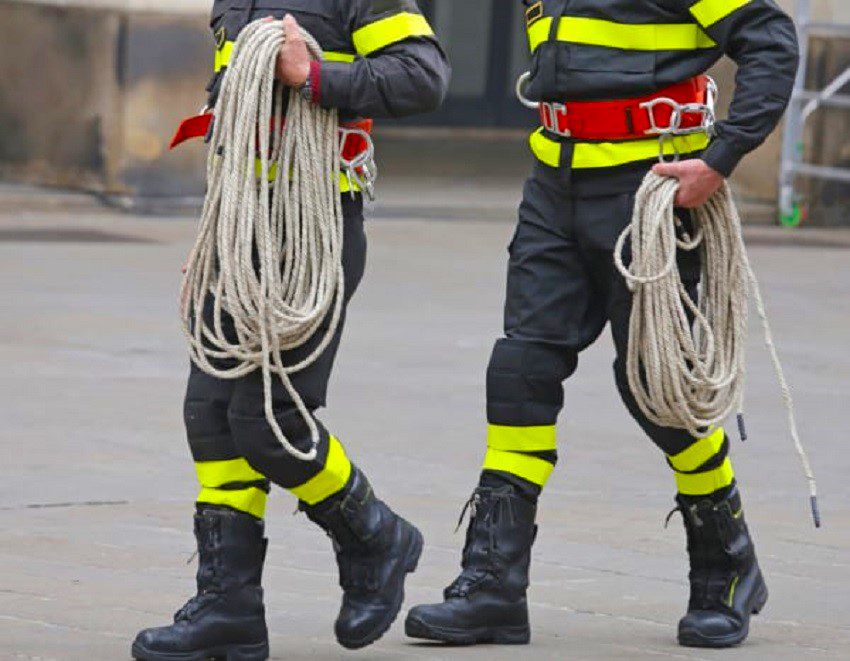
Choosing the Safest Rope for Fire Department Life Safety
The preferred type of rope for fire department life safety use is dynamic rope. Dynamic rope is designed to stretch and absorb shocks, making it suitable for rescue operations.
Contents at a Glance
ToggleIt provides the necessary strength and resilience needed in emergency situations. Dynamic ropes used by fire department personnel adhere to strict safety standards and are tested rigorously to ensure their reliability. This ensures that firefighters can rely on the rope to support their weight and withstand intense conditions.
Dynamic ropes are crucial tools that aid fire department personnel in performing life-saving operations efficiently and effectively.
Choosing The Safest Rope For Fire Department Life Safety
Choosing the safest rope for fire department life safety is of utmost importance due to the critical nature of their operations. Reliability and strength are key factors to consider when evaluating the safety of a rope. A rope that is strong and dependable ensures that firefighters and rescue personnel can trust their equipment to perform effectively in life-saving situations.
When assessing rope safety, there are specific criteria that need to be considered. These criteria include the rope’s tensile strength, elasticity, resistance to heat and abrasion, as well as its compatibility with existing equipment and safety regulations. A rope that meets these criteria ensures that it can withstand the demanding conditions faced during fire and rescue operations.
The impact of rope failure in a life-saving operation cannot be understated. It can lead to catastrophic consequences, endangering the lives of both rescuers and the people they are trying to save. Therefore, choosing a rope that has been extensively tested and certified for its strength and reliability is crucial. Fire departments must invest in ropes that are specifically designed and approved for life safety use to minimize the risk of failure and ensure the highest level of protection.
Rope Safety Certifications
When considering the preferred type of rope for fire department life safety use, it is important to understand the relevant certifications and guidelines. The National Fire Protection Association (NFPA) has established safety standards specifically for ropes used in firefighting and rescue operations.
These standards dictate the minimum requirements for rope strength, durability, and performance in life safety situations. It is crucial for fire departments to choose ropes that are NFPA certified to ensure they meet these rigorous standards.
In addition to NFPA standards, it is also beneficial to consider certifications and guidelines set by the International Organization for Standardization (ISO) and the American National Standards Institute (ANSI). These organizations provide additional insights into rope quality and safety, offering further assurance that the chosen ropes are suitable for fire department life safety use.
Types Of Fire Rescue Ropes
When it comes to choosing the preferred type of rope for fire department life safety use, it is important to consider various factors. One of the first considerations is whether to use a static or dynamic rope. Static ropes are designed to stretch minimally, making them ideal for scenarios where stability and control are crucial. On the other hand, dynamic ropes are engineered to stretch and absorb impact forces, making them suitable for situations where falls are more probable.
Another important aspect is the heat resistance of different rope materials. Certain materials, such as aramid fibers, have excellent heat resistance properties, making them ideal for fire rescue operations. Additionally, consideration should be given to the specific fire scenarios that the rope will be used in. For instance, some ropes are better suited for high-rise rescues, while others are specifically designed for technical or confined space rescues.
| Material | Heat Resistance |
|---|---|
| Aramid fibers | Excellent |
| Nylon | Good |
| Polypropylene | Fair |
Diameter and length considerations are also important factors to take into account. Thicker ropes generally offer more strength and durability, while longer ropes provide greater reach and flexibility. However, it is essential to find a balance between size and practicality, as excessively large ropes can be cumbersome to handle in demanding rescue situations.
Essential Rope Maintenance Practices

Regular inspection routines are crucial for ensuring the safety and reliability of fire department ropes. Inspection should be conducted on a regular basis, checking for signs of fraying, abrasions, or any other damage that may compromise the integrity of the ropes. In addition, it is important to clean the ropes regularly to remove any dirt, grease, or contaminants that may affect their performance.
When it comes to cleaning, follow the manufacturer’s guidelines or use a mild detergent with warm water. Afterward, make sure to thoroughly rinse and dry the ropes before storage. Speaking of storage, ropes should be stored in a cool, dry place, away from direct sunlight and any chemicals that could deteriorate the material. Proper storage helps maintain the strength and durability of the ropes.
As for determining when to retire fire department ropes, it is essential to establish a specific retirement criteria based on industry standards or manufacturer recommendations. Factors such as the frequency of use, the severity of load-bearing, and the condition of the ropes should be taken into consideration. It is crucial to prioritize safety and replace ropes that have reached their retirement point.
Advanced Rope Technologies
Innovations in fire safety ropes have led to significant advancements in rope technologies utilized by fire departments for life safety purposes. A crucial aspect of rope performance is the selection of appropriate fiber materials. Extensive research is being conducted to enhance durability and safety.
The role of fiber materials in rope performance:
- High-strength synthetic fibers like aramid, polyethylene, and ultra-high-molecular-weight polyethylene (UHMWPE) have revolutionized fire safety ropes.
- These fibers not only possess incredible tensile strength but also provide resistance against abrasion, heat, and chemicals.
- Innovative manufacturing processes have resulted in ropes that exhibit increased flexibility, reduced weight, and improved grip for firefighters.
- Ongoing studies focus on improving resistance to elongation, shrinkage, and UV degradation.
- Ropes with integrated signaling systems and reflective properties are being developed to enhance visibility in low-light conditions.
- Efforts are underway to refine rope construction techniques and develop advanced coatings to mitigate the effects of wear and tear.
Training For Optimal Rope Use
When it comes to fire department life safety, the type of rope used is crucial. Proper training is essential for optimal rope use. It is important to handle the rope correctly to ensure safety. Scenario-based rope rescue training can help firefighters develop the necessary skills to effectively use ropes during emergency situations. By participating in drills that focus on rope life safety skills, firefighters can improve their ability to handle ropes under pressure. These drills enable them to become familiar with different rope techniques and enhance their overall performance. Through regular training and practice, firefighters can gain the confidence and expertise needed to use ropes effectively for life-saving purposes.
Case Studies
- Case Study 1
In a recent incident, firefighters were called to rescue a person trapped in a burning building. The rope they used, made of nylon, failed under extreme heat and caused a fatal accident. This incident highlights the importance of using heat-resistant ropes in fire department life safety operations.
- Case Study 2
Another incident involved a rope made of synthetic material. When it came into contact with sharp debris during a rescue operation, the rope frayed and snapped, endangering both the rescuers and the victims. This emphasizes the need for using durable and abrasion-resistant ropes in fire department scenarios.
- Case Study 3
In a third case, a rope made of natural fibers was unable to withstand the weight of a rescuer and broke at a knot point, resulting in a serious fall. This incident underscores the necessity of utilizing high-strength ropes for life safety purposes in fire department operations.
These real-life incidents provide valuable lessons learned for fire departments. It is crucial to invest in ropes that are specifically designed and tested to withstand the demanding conditions of fire emergencies, ensuring the safety of both the rescuers and those being rescued.
Purchasing Guidelines
Choosing the right type of rope for fire department life safety use is crucial. Factors such as strength, durability, and heat resistance should be considered to ensure the safety of firefighters during rescue operations.
Factors To Consider Before Buying
When selecting a rope for fire department life safety use, it is important to consider several factors. Balancing cost and quality is paramount in making the right choice. Remember to prioritize strength and durability over price. Look for ropes with high tensile strength that can withstand heavy loads and resist wear and tear.
Another crucial factor to consider is the vendor’s reputation and product reviews. Seek out reliable vendors with positive feedback from customers. Check if they comply with relevant safety standards and have experience supplying ropes specifically designed for fire department applications.
By carefully evaluating these factors, you can find the preferable type of rope for fire department life safety use. This ensures the safety of firefighters and individuals in need of rescuing and the effectiveness of their operations.
Frequently Asked Questions On Which Is The Preferred Type Of Rope For Fire Department Life Safety Use?
What Type Of Rope Is Used By Fire Departments?
Fire departments typically use dynamic ropes made from nylon or polyester due to their high strength, durability, and resistance to heat and chemicals.
How Are Nylon Ropes Beneficial For Fire Department Life Safety?
Nylon ropes are preferred for fire department life safety due to their excellent shock-absorption properties, high tensile strength, and resistance to abrasion. They also have a low stretch factor, making them suitable for rappelling and rescue operations.
Why Are Polyester Ropes A Popular Choice For Fire Departments?
Polyester ropes offer excellent resistance to UV radiation, moisture, and chemicals. They are also known for their low stretch factor and high strength, making them reliable for fire department life safety applications.
Can Static Ropes Be Used For Fire Department Life Safety?
While static ropes are strong, they are not recommended for fire department life safety due to their lack of stretch. Dynamic ropes provide essential shock absorption during falls, making them the preferred choice.
Conclusion
When it comes to selecting the preferred type of rope for fire department life safety use, it is crucial to prioritize strength, durability, and ease of handling. With the wide variety of ropes available, fire departments must consider factors such as the rope’s breaking strength, durability in harsh conditions, and compatibility with essential equipment.
By choosing the right rope, fire departments can ensure the safety and protection of both their personnel and those they serve.

